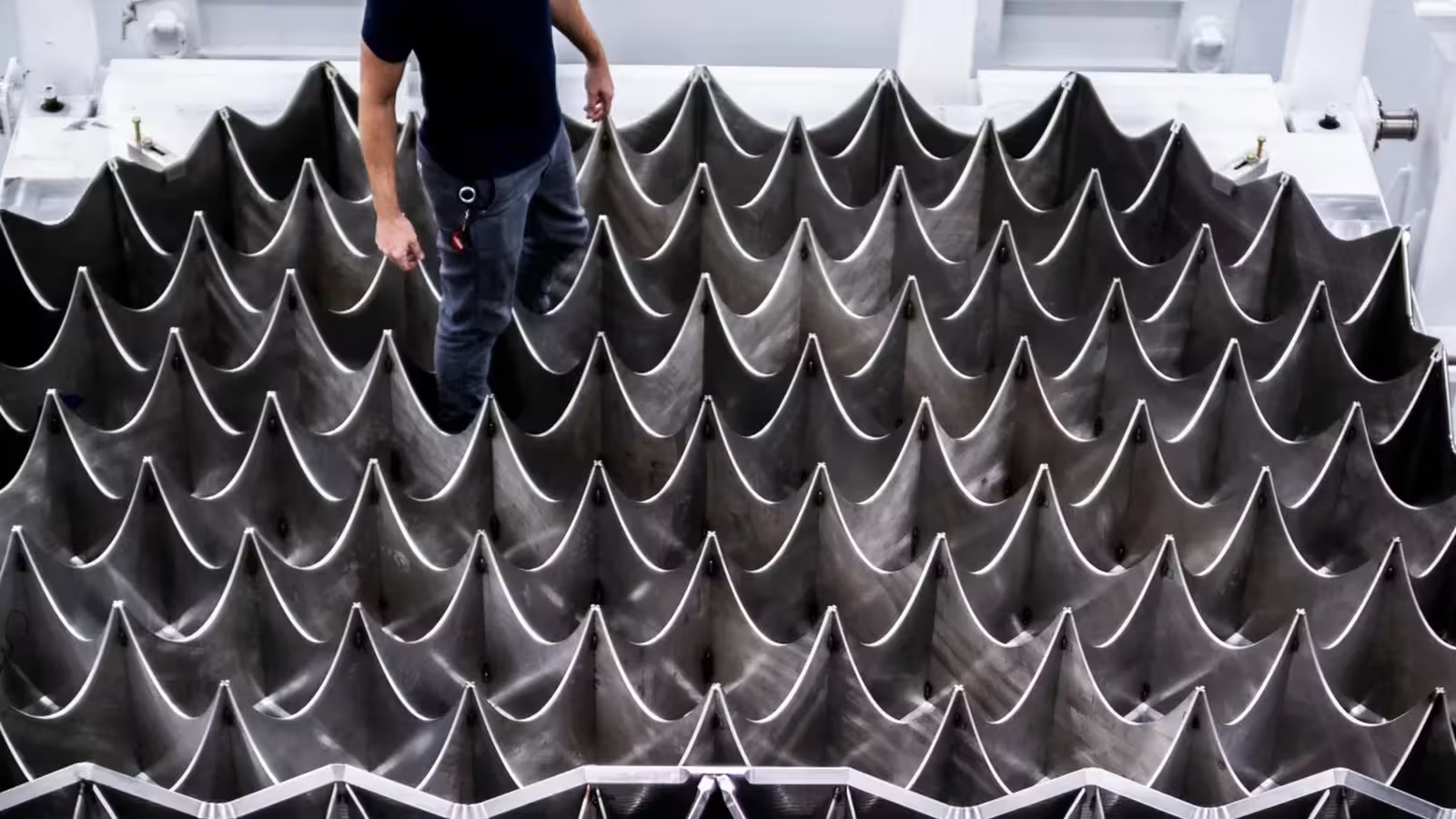4 Minutes
SpaceX expands Super Heavy’s grid fins ahead of 10th Starship test
SpaceX is ramping up preparations for the 10th test flight of Starship, the integrated launch system made up of the upper-stage Starship spacecraft and the first-stage Super Heavy booster. This week the company revealed a redesigned set of grid fins for the Super Heavy booster — significantly larger and structurally reinforced compared with the previous generation.
To emphasize the fact, SpaceX shared a photo showing an engineer standing on one of the new grid fins. Take a look below:
What’s new: design and structural changes
Size and placement
The updated grid fins have roughly 50% more surface area than the earlier design, giving them greater aerodynamic authority during reentry and descent. SpaceX has also relocated the fins further down the 233-foot (71-meter) booster, moving them away from the immediate heat and exhaust of the Starship engines during stage separation. This repositioning reduces thermal exposure and lowers the risk of heat-related damage during ascent and staging.
Count and strength
Instead of four smaller grid fins, the new layout uses three oversized fins. The company says the new components are not only bigger but also stronger, engineered to withstand higher dynamic loads and thermal stresses while controlling the booster’s attitude and trajectory during reentry and the landing sequence.
Product features and technical advantages
Key product features of the redesigned grid fins include:
- ~50% increased surface area for improved aerodynamic control
- Reinforced structure to resist higher thermal and mechanical loads
- Three-fin configuration tuned for steeper angles of attack during descent
- Lower placement on the booster to minimize heat exposure from stage separation
Advantages include more precise control during hypersonic to subsonic flight regimes, reduced thermal risk, and a fin geometry optimized for the booster’s planned tower "catch" recovery maneuver.
Comparisons and use cases
Compared with the prior four-fin layout, the three large grid fins aim to simplify mechanical complexity while delivering equal or superior control authority. In practical terms, this improves the booster’s ability to reorient and decelerate at higher angles of attack — critical for returning to the launch tower for the planned vertical capture by the Starship launch tower.
Primary use cases include routine orbital test flights, iterative development campaigns at Boca Chica, and operational missions where rapid booster turnaround and precision recovery are required to lower launch costs.
Market relevance and program context
SpaceX intends to fly this upgraded configuration from its Starbase facility in Boca Chica, Texas, likely before month-end. The timing is significant: NASA is closely monitoring Starship’s development because the agency has contracted SpaceX to provide a lunar lander variant for the Artemis III mission, currently targeted for 2027. Reliable booster recovery, improved reusability and robust aerodynamic control are all essential to meeting long-term commercial and NASA mission needs.
Outlook
The redesigned grid fins represent an incremental but high-impact change in the Starship development roadmap. If the fins perform as expected during the impending test flight, they could accelerate the booster’s return-to-flight reliability and reduce operational risks for future lunar cargo and crew missions. Nonetheless, timelines for Artemis and other milestones remain subject to change based on test results and certification requirements.
Source: digitaltrends


Leave a Comment